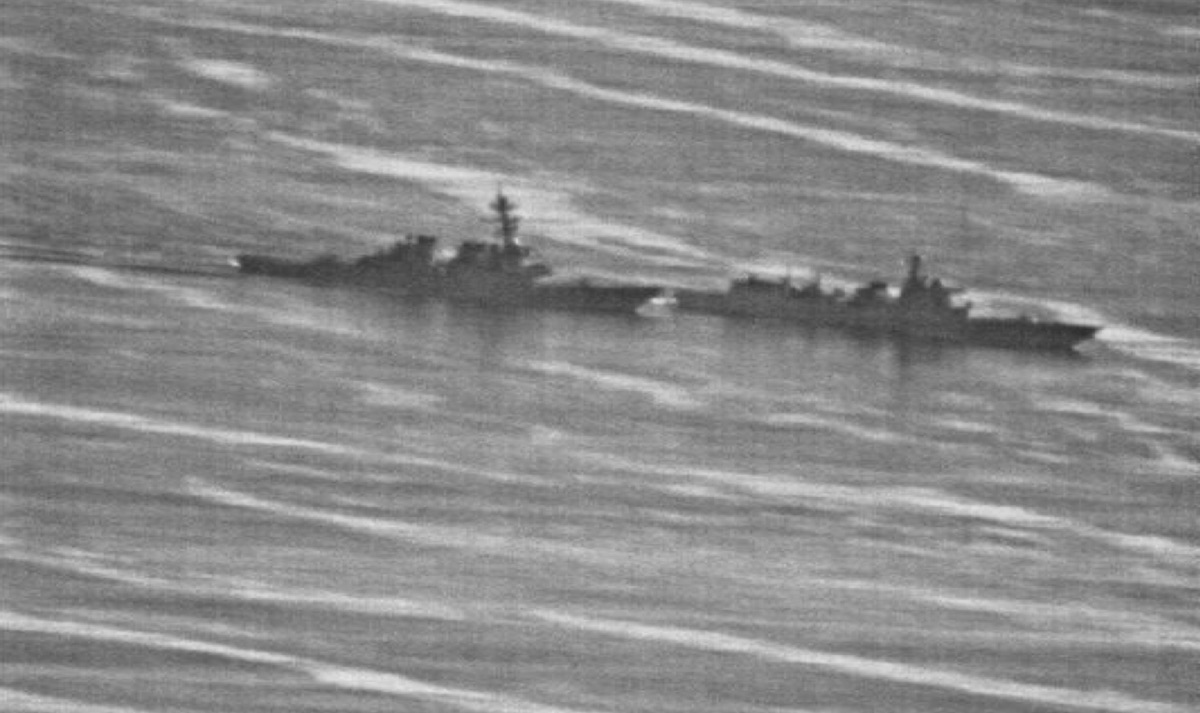
The question following the recent close encounters between guided-missile destroyer USS Decatur (DDG-73), the U.K. Royal Navy’s amphibious ship HMS Albion and Chinese naval ships in the South China Sea is if Beijing is changing their posture toward foreign navies in the region,a Pacific maritime expert said Monday.
“Imagine if that incident occurred as [Decatur] entered” the 12-mile claimed waters around the disputed territory “rather than while leaving,” referring to the action in which a People’s Liberation Army Navy destroyer passed within less than 100 yards of the American ship, Bonnie Glaser, director of the China Power Project at the Center for International and Strategic Studies, said on Monday.
“The risk of accidents has been heightened” if the Chinese are no longer trying to shadow vessels conducting Freedom of Navigation Operations, but trying to impede entry.
“That kind of interaction … is certainly dangerous,” but also may be an indication that Chinese President Xi Jinping is trying to demonstrate Beijing’s sovereignty in the South China Sea as one facet of increased rivalry between China and the United States diplomatically, economically and militarily across the Indo-Pacific.
“The Trump administration makes it clear that there will be FON Ops demonstrations on a regular basis [and] that is a very important message to send” to Beijing,” said Amy Searight, director of the CSIS Southeast Asia Program.
The possibility of a follow-up major naval exercise later this fall in the Pacific likely “would confuse Chinese strategists a little bit” about the United States’ intentions, but “it could be a positive step” with some risks attached to doing it, she said.
The freedom of navigation questions and related ones covering security were asked as CSIS rolled out a major report on steps to defuse tensions over territorial claims, militarization of reclaimed reefs, depleted fisheries, possible oil and gas exploration licensing and drilling not only between the United States and China but also between China and its Southeast Asian maritime neighbors.
The Association of Southeast Asian Nations [ASEAN], Australia and China have been wrestling for months with developing a code of conduct covering those actions, but they remain far apart as how to proceed on key issues, including who’s involved in the agreement, resolution of disputed claims and militarization.
Glaser said at the Washington, D.C. event, China’s “interests are expansive” when it comes to the South China Sea, and it stakes much of its territorial claims on history. But Beijing does not clarify “what is China’s claim” when it comes down to clearly specifying this particular section of the South China Seas has always been under China’s control.
As part of that expansive view, China in its draft responses to a proposed code of conduct covering ASEAN, Australia and Beijing would block nations and any businesses headquartered in them that are not in the region from participating in energy exploration and development or conducting military exercises there without permission of the countries in the region.
If adopted, and the panelists agreed those provisions are not likely to be included, would directly affect the United States.
While not trying to derail a possible agreement of some kind, Glaser added, “China wants a veto” to limit American influence across-the-board. That includes functions from international trade to development to fisheries to providing security cooperation with countries such as Vietnam to conducting naval exercises.
In all these discussions but included in the CSIS report is the largest land mass in the South China Sea, Taiwan. It is not included in the code of conduct talks because it is considered part of China, but Glaser expected that it would probably abide by any agreement “to be seen as a constructive player in the region.”
Yet for its clear demonstration of regularly asserting Freedom of Navigation rights in international waters for all nations, the United States’ engagement in Southeast Asia seems to be declining. Prashanth Parameswaran, senior editor of The Diplomat, said. He pointed to the American withdrawal from the Trans Pacific Partnership and President Donald Trump’s announcement that he would not be attending the ASEAN conference as evidence of a changed U.S. approach from the Obama administration.
This leaves many leaders in ASEAN looking for a sense of direction from the United States to their concerns and issues. Absent an announced strategy or policy, they have been increasingly zeroing in on meetings and discussions with cabinet heads. But this path has its own pitfalls, Parameswaran warned.
“What happens if Secretary [James] Mattis leaves” the Pentagon, he said he is being asked. The reason is: “If you’re not sure of policy approach, you’re looking at individuals” for guidance and a heads-up; but when they leave, there is no one else to immediately turn to.





